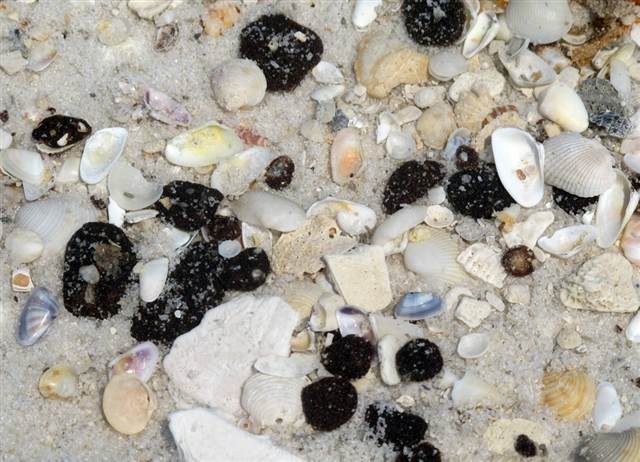by Jay Reeves - Associated Press - September 20, 2011

Tar balls mix with seashells washed up near Pensacola Beach, Fla., on Sept. 14 - Melissa Nelson / AP
BIRMINGHAM, Ala. (AP) — Tar balls washed onto Gulf of Mexico beaches by Tropical Storm Lee earlier this month show that oil left over from last year's BP spill isn't breaking down as quickly as some scientists thought it would, university researchers said Tuesday.
Auburn University experts who studied tar samples at the request of coastal leaders said the latest wave of gooey orbs and chunks appeared relatively fresh, smelled strongly and were hardly changed chemically from the weathered oil that collected on Gulf beaches during the spill.
The study concluded that mats of oil — not weathered tar, which is harder and contains fewer hydrocarbons — are still submerged on the seabed and could pose a long-term risk to coastal ecosystems.
Problem, Solution, SitRep, or ?:
Recent Comments